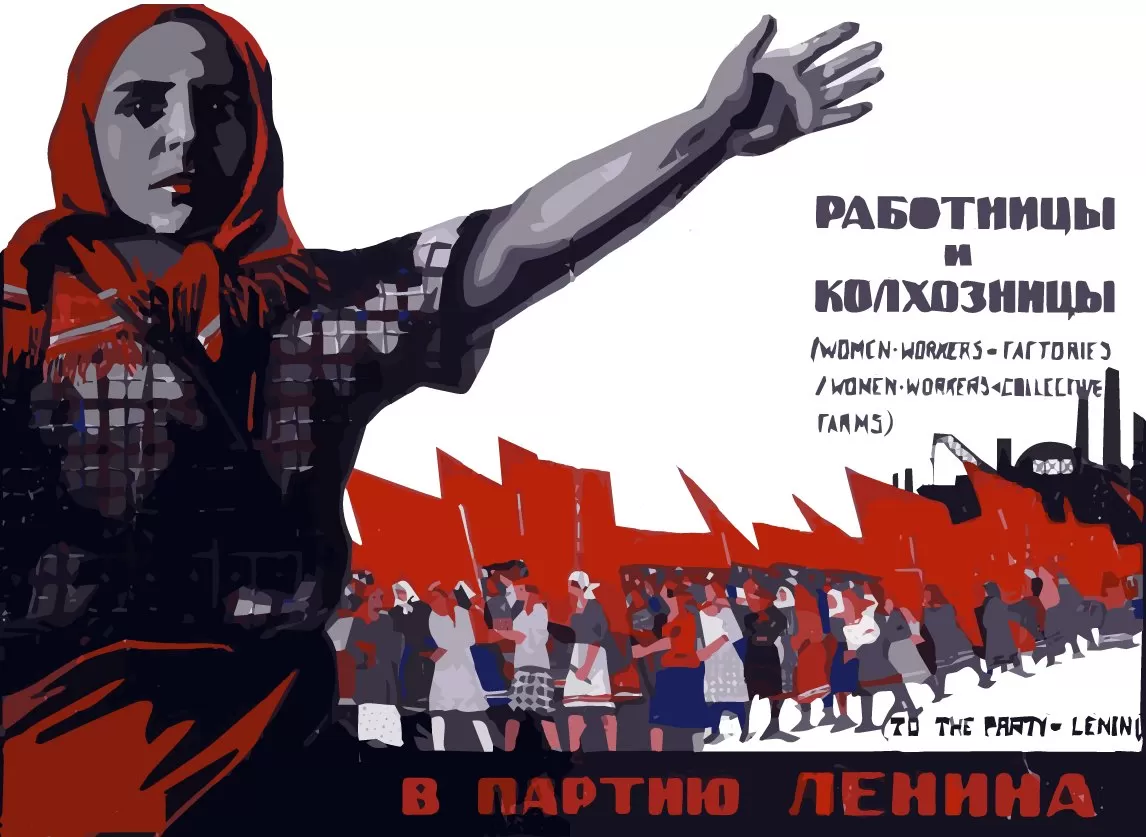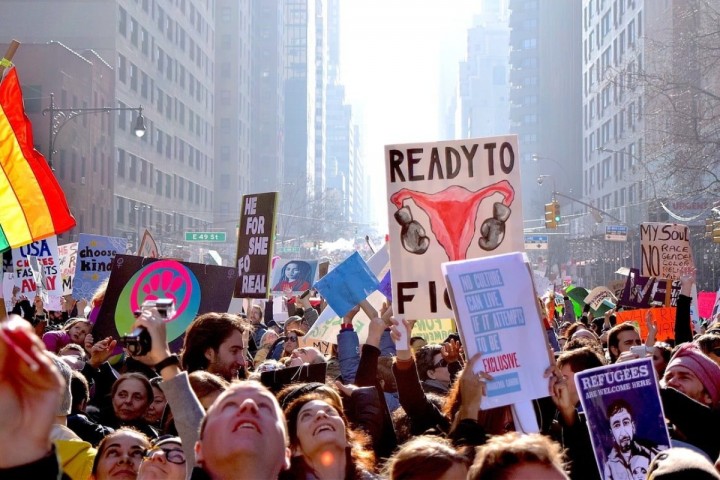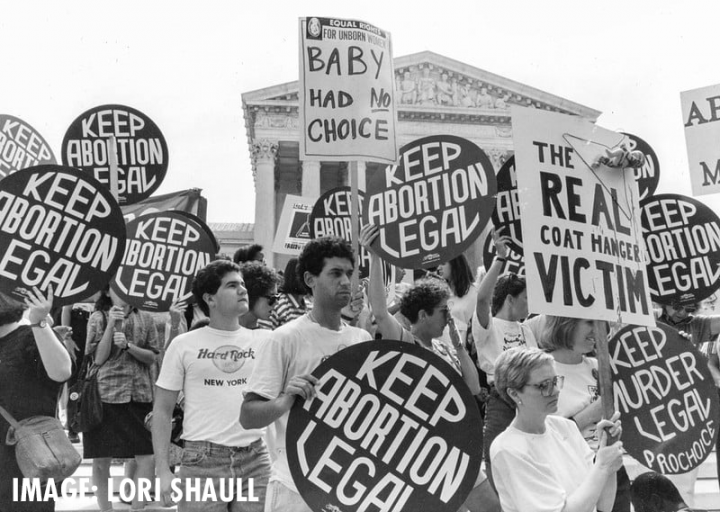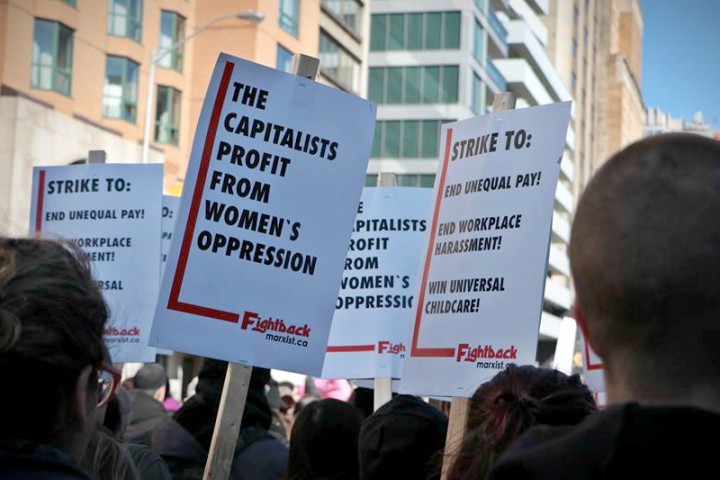
Fifty years ago, the US Supreme Court passed its famous Roe v Wade ruling, providing abortion rights to women in America. Today, these same rights are being ripped up. The fight to end women’s oppression must be a fight for socialist revolution.
On 24 June 2022, nine unelected and unaccountable judges took away the rights of millions of American women over their bodies. They curtailed the right to abortion almost exactly fifty years after it was won in the Roe v Wade Supreme Court ruling.
This demonstrates the precariousness of all rights and benefits for the working class under the capitalist system. The rights that we enjoy are not given to us, once and for all, by our ‘enlightened’ rulers. They are won by us in struggle, and must be continually fought for.
The struggle over the right to abortion has been an important flashpoint in the class struggle in Poland in recent years, as well as in a number of countries across Latin America. Similarly, the movement to ‘repeal the 8th’ in Ireland dealt a mighty blow against the establishment.
Why are reproductive rights under attack at the moment? And what does the struggle for abortion rights have to do with the class struggle?
Crisis
These attacks are ultimately linked to the crisis of capitalism. There has been an extremely weak recovery since the crisis of 2008. And then in 2020 another huge economic crisis began, sparked by the pandemic, leading to today’s cost-of-living crisis. This has thrown society back decades when it comes to progress for women.
A UN report from last year showed that standards of living have declined in 90 percent of countries. It also showed that this has been the sharpest decline since monitoring began. This means that in general the ruling class is unable to afford reforms.
Because they cannot offer anything but austerity, certain wings of the ruling class have tried to create a base for themselves by whipping up divisive prejudices, to distract workers from their real interests. Reactionary anti-abortion legislation is pushed as part of their ‘culture war’, whose real purpose is to divert attention from the crisis of capitalism.
There is a huge resurgence in strike activity in many countries. We have also seen the immense Black Lives Matter movement. There is a big radicalisation to the left amongst the youth and many workers. These attacks on abortion must therefore be placed in the context of class struggle, of turbulence in society, and of mass discontent.
Cynicism
American politicians who push anti-abortion politics do so for cynical ends. They are not ‘pro-life’, but pro winning elections.
For example, Ronald Reagan was known for opposing abortion as a ‘pious’ Christian. Yet when he was governor of California he actually extended the right to abortion in 1967. Similarly, Mitt Romney ran on an anti-abortion programme in 2012; yet in a debate in 1994 with the Democrat Ed Kennedy, Romney argued in favour of abortion rights, and Kennedy argued against.
Historically, the Republican Party actually supported abortion rights. This was for ‘libertarian’ reasons – they were opposed to government interference in private lives.
It was only in 1978, five years after Roe v Wade was passed, that the Republicans even started to think about opposing abortion rights. Why? Because their former base in Jim Crow segregationist racism was starting to collapse. They needed to promote another divisive prejudice instead, and so they looked to white evangelical Christians.
Even this layer was not anything like as preoccupied with abortion as it is today, however. That only started to happen in the 2000s and especially after 2008, coinciding with the growth of the ‘culture wars’ in the US. It’s no coincidence that all this coincided with the crisis and the inability of the ruling class to offer the American working class any future.
We can see the same thing in reverse with the Democrats. They have increasingly styled themselves as opposed to women’s oppression and racism. As their opponents have promoted anti-abortion politics, they have gravitated to pro-choice positions to cultivate their own base. Their support for these causes is entirely opportunistic.
Joe Biden today presents himself as a champion of a woman’s right to choose. But in the past, he said the opposite, and he has never explained this about-face.
In reality, the Republicans’ attacks on abortion rights gave the Democrats a boost in the midterm elections. This is what they care about.
If the Democrats really cared about abortion rights, they would at some point in the past fifty years have passed federal legislation guaranteeing the right to abortion, instead of this right being dependent on a court ruling. But they’ve never tried to do that, even when they controlled both houses of Congress.
It is to the Democrats’ advantage to keep holding the threat of abortion rights being taken away over women, so that people vote for them and against the Republicans.
Class question
The right to abortion is a democratic, not a socialist right. That is to say, it should be part of the formal democratic rights that bourgeois democracy is based on. Such rights do not mean real equality and freedom are actually attained, because under capitalism material inequality is enormous.

What does it say about capitalism today, that even this legal right cannot be guaranteed? That we are being thrown back into barbaric conditions in which women are being forced to give birth against their will, or to seek illegal abortions in dangerous conditions?
In the Russian Revolution, women won rights that were much more advanced than what they have in countries like the USA today. Yet this took place over a hundred years ago in a backwards economy, and in a deeply religious society.
Russian women won full rights to abortion, made freely available in the public healthcare system, along with more progressive divorce laws than we have today. They won paid maternity leave, which still doesn’t exist in the US.
The struggle for abortion rights is more than just a democratic one, however. It is also a class-based one. Removing the right to abortion is actually an attack on working-class women in particular, because rich women can circumvent these legal restrictions.
This is exactly what rich Polish women wanting an abortion do. They travel to Germany or the Czech Republic to have abortions at private clinics. 34,000 women have done this since 2020, when legislation restricting access to abortion was introduced. In the United States, women fly across state lines to get an abortion.
But this is really not possible for most working class women, who cannot afford the flights and the hotel costs, much less private clinic fees, or get the time off work.
Mass movements
It is no surprise that when struggles for abortion rights have broken out, they have had a distinctly working-class character. These movements therefore also have the potential to ignite other class-based struggles, and even to bring down reactionary governments.

Tens-of-thousands of young women and also young men attended protests in New York, Los Angeles, and Chicago after the Supreme Court overturned Roe v Wade. There were thousands of smaller protests in cities and towns all across the US, and even solidarity protests across the world.
Despite the size and militancy of these protests, they suffered from a lack of leadership. Given that this is an attack on the working class, the trade unions should have played a leading role in this movement. They should have linked the struggle for abortion to a general struggle for public services for working-class people, and for good, well paid jobs for all. But they didn’t.
On 26 October 2020 in Poland, there were 226 demonstrations against the new anti-abortion legislation. Just two days later this had exploded to 460 demonstrations. They called this movement ‘Strajk Kobiet’ (Women’s Strike).
All the key cities were brought to a standstill and even tiny towns had big protests. There were reports of farmers blocking the main roads with their tractors.
Statues of conservative politicians were vandalised, Sunday masses were interrupted, church walls and government buildings were graffitied with slogans like “I wish I could have aborted my government”, and “This is war”.
The miners and the nurses unions expressed their support. Tram drivers, bus drivers, and taxi drivers blocked the main roads in the big cities to support the movement.
This expanded into a broader movement against the government and the church. Under this pressure, the official leadership of the movement expanded their demands to much more wide ranging political ones, demanding decent working and living conditions for everyone.
Guatemala
In 2020, a powerful mass movement against an austerity budget emerged in Guatemala. Following this, the same reactionary government moved draconian anti-abortion legislation in 2022, declaring Guatemala the ‘pro-life capital of the world’. The same piece of legislation also legalised violence against LGBT people.
This legislation was part of an attempt by this reactionary government to divide the working class that had responded so militantly against its austerity budget. But the plan backfired.
Instead of dividing the working class, this law became the spark which reignited the movement of 2020. At the protests people were burning the Guatemala flag, and other demands began to be raised, such as for the government to resign, and for an anti-austerity budget with increased funding of education and health care.
The healthcare system in Guatemala is particularly underfunded, with just 0.4 doctors per thousand people, compared to the Latin American average of three. The demand for more healthcare exposed the utter hypocrisy of these bourgeois politicians who claim to be ‘pro-life’, but who cannot find the money to fund the healthcare system which saves lives.
Thanks to this mass movement, the President made a complete U-turn, suddenly discovering he was opposed to the bill. As we explained above, such rights that benefit the working class are not gifts from above, but victories of mass struggle.
Concessions
The Roe v Wade ruling was similarly a concession by a ruling class that feared a developing movement. What was happening in the US at that time? The anti-Vietnam War movement, the black civil rights movement, and revolutionary events all over the world.

These movements were radicalising and learning from each other, and linking up. Roe v Wade was an attempt to nip the danger of a mass movement for abortion rights in the bud. The ruling class didn’t want abortion to be seen as a product of a successful political struggle, so they got the Supreme Court to interpret the constitution so as to legalise abortion.
We should be clear. When reforms are granted by the capitalist system, they are still limited. And while we do fight for reforms, we are also aware that they can be taken away at any time. The overturning of Roe v Wade, almost half a century after it was passed, when everyone thought the right to abortion was permanently guaranteed by the constitution, is a very clear example of this.
In fighting for these reforms, we do not put a single ounce of trust in bourgeois institutions to protect and implement them. The overturning of Roe v Wade has taught a very harsh but necessary lesson to millions of ordinary Americans: that their constitution is not sacred or carved in stone, and that their rights are never guaranteed under capitalism.
Material conditions
Finally, we must not understand the question of abortion rights in a narrow legalistic manner. The right to abortion does not guarantee access to abortion.
If it means you have to take days off work unpaid; if you have to drive for 12 hours or more to access a clinic; if you have to use all of your savings or go into debt for a procedure: do you really have access to abortion?
The American Public Health Association found that more than 4,000 US women every year are denied an abortion because they are past the time limit on abortions. The biggest reason why women were too late was because they had to spend time trying to raise money to undergo the procedure, or for the transport costs.
In Canada, which has strong legal rights to abortion, only one-in-six hospitals offer the procedure and these are all in the big cities, forcing miles of travel on women in rural areas. And for some women, this is completely impossible.
Abortion has been legal in the North of Ireland since 2019, but no abortion services have been put in place. In practice, the situation has not changed. Over 200 women travelled to England in 2022 for an abortion; hundreds ordered pills online from unregulated providers; and others simply gave birth because they had no other option.
Colombia decriminalised abortion in 2022, but there are no abortion services in most hospitals. Of the estimated 400,000 abortions carried out every year in Colombia, over 90 percent are performed illegally, in non-medical settings. As a result, 33 percent of abortions in Colombia have complications, compared to 0.1 percent in England.
We therefore demand actually accessible, well-funded abortion services in every local hospital, which are free-of-charge, and which people can access without fear of harassment or intimidation.
Transformation
As Marxists, we don’t look at rights in the abstract, but in the real material world in which they can or cannot be realised. This requires looking at society as a whole. Does a woman actually have autonomy? If her choice is between raising a child in crushing poverty and having an abortion, is that a real choice?

In the USA, over half of those who have an abortion live below the poverty line. In England and Wales, women living in poverty are three times more likely to have an abortion as those who are not. There are very similar statistics around the world.
In many countries there is no free, nationalised healthcare. The cost of childbirth itself can be in the tens-of-thousands, and the cost of raising a child under capitalism is very high.
In the UK, the average cost of childcare is £14,000 a year. The average woman in the UK spends twenty hours a week on unpaid child-related household labour. This prevents millions of women from taking part in politics, culture, education, and in society as a whole.
A TUC report in 2016 found that women who had a child were paid 38 percent less by the time they were 40 years old, than women who did not have a child.
Liberal feminists view the fight against oppression as being the struggle for individual rights. But we understand that women’s oppression began when class society emerged, and is based on the existence of private property. It can only be truly ended when private property and class society are abolished.
Equal pay legislation has existed in the UK for over 50 years, and yet there is still a 20 percent gender pay gap. Sexual violence has been illegal for many more years than that, yet one-in-four women in the UK experience sexual violence every single year.
We don’t need legalistic changes to end women’s oppression. We need real material changes. We need socialisation of household labour, such as high-quality, affordable canteens in each neighbourhood. We need free childcare so that women can start a family if they want to, whilst still working and participating in politics, culture, and society in general.
We already have the means to provide all these things, but under capitalism they are privatised, run for profit, and inaccessible to millions.
Socialism
Therefore the struggle for genuine freedom and equality for women is tied to the struggle for socialism – that is, a mode of production in which the key productive forces are publicly owned and democratically run to meet the needs of society as a whole. Only then can we provide the resources required to rid society of the material basis for women’s oppression.
Restrictions on abortion rights are attacks on working-class women and on the working class as a whole. We must take the attitude that an injury to one is an injury to all.
We must fight the attempts of the ruling class to divide the working class. Any reform that they try and take away must be fought by the united strength of the working class.
The trade unions must take a lead in the fight against attacks on abortion rights, but also to fight for a fully-funded public healthcare system so rights such as this do not simply exist on paper.
We need to understand that these attacks are a product of the decrepit capitalist system. A system that in general can no longer afford reforms, and is therefore chipping away at the reforms and gains that were won in the past through struggle.
Only a socialist society can guarantee these rights and reforms. Only a socialist society can remove the root of women’s oppression – class society itself – and create a future in which oppression is a relic of the past.

